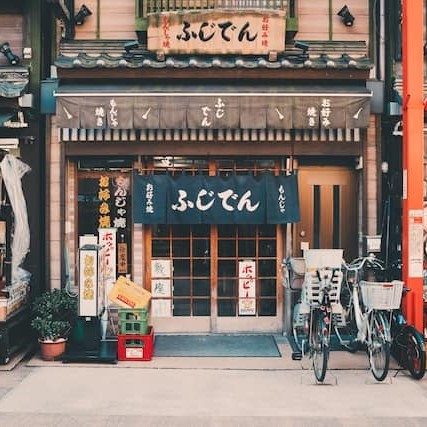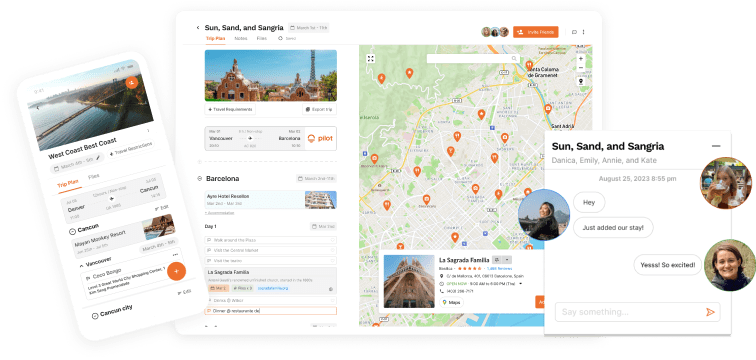Table of Contents
You’ve been to Hawaii, you’ve been to the Californian coast, and now you’re looking for your next exciting surfing destination. Look no further than Japan!
This beautiful island country offers incredible surf spots, stunning landscapes, and a rich surfing culture that's waiting to be explored. The sport actually made its Olympic debut at the Tokyo 2020 Games off the shores of Tsurigasaki Surfing Beach.
In this guide, I'll dive into why surfing in Japan is a must-try adventure for surfing enthusiasts. I’ll go over where to go, tours and companies to consider, safety tips, how to plan, and useful items to pack.
Why Surf in Japan?
Japan may not be the first destination you think of for surfing, but it's rapidly gaining popularity among surfers for good reason.
Japan’s coastline offers a wide range of waves, from the gentle beaches of Okinawa to challenging reef breaks. This provides opportunities for all skill levels.
Surfing in Japan also offers a unique cultural experience. Modern surf culture emerged in Japan after World War II, but the Japanese have long been riding the waves. Over 100 years ago, the children of Japanese fishermen surfed the waves on wooden bodyboards called “itago.”
Japan is known for valuing heritage and craftsmanship. Visiting surfers will be able to experience the blend of modern and historical surfing in Japan.
Where Are the Best Surfing Destinations in Japan?
Japan has several surf regions that are perfect for surfers of all skill levels. Here are some of my top recommendations.
5. Shikoku Island
Shikoku Island, located in southwestern Japan, is a hidden gem for surfers seeking a unique and thrilling experience.
This lesser-known destination offers uncrowded breaks, pristine beaches, and a laid-back vibe.
Shikoku's coastline boasts a variety of surf spots, ranging from beach to reef breaks.
Shikoku is also renowned for its natural beauty, with stunning landscapes, picturesque mountains, and serene temples. Once you’re done in the waves, why not hit a hiking trail to explore the scenery?

4. Chiba
Just a short train ride from Tokyo, Chiba is a popular and accessible destination for surfers looking for consistent waves and sandy beaches. Chiba was home to the first-ever Olympic surfing competition, Tsurigasaki Beach.
With a range of breaks suitable for different skill levels, Chiba is a great option for beginner and intermediate surfers. If you plan on going to Chiba, get there early. It’s one of the most popular surf spots in the area, regularly hosts surfing competitions locally and internationally.
After you’ve surfed yourself out, head back to the capital and explore the many things to do in Tokyo.

3. Okinawa
Okinawa is a group of tropical islands located in the southernmost part of Japan. The turquoise blue waters of Okinawa are home to some of the best surf breaks in Japan.
The warm tropical climate, pristine beaches, and vibrant marine life make Okinawa an ideal spot for surfers seeking an adventurous and exotic experience. The water temperature also remains warm year-round. This makes it a perfect destination for surfers looking to catch some waves, even during the winter months.
Whether you’re backpacking in Japan or just here for a quick visit, you’ll love Okinawa's unique cultural heritage. Its distinct Indigenous Ryukyuan culture and friendly locals provide a rich cultural experience to complement your surf adventures.

2. Hokkaido
Mostly known for its world-class mountains, Hokkaido also has a lot to offer for water sports enthusiasts.
The northern region is much less crowded than the southern beaches due to its colder temperature. If you’re okay with chilly water, Hokkaido is great for cold water surfing with stunning snow-capped mountains in the background.

1. Shizuoka
Located on the east coast of Honshu Island, Shizuoka is known for its long coastline with a variety of surf breaks. It's a great destination for surfers who want to experience the Japanese countryside, hot springs, and local cuisine.
As well as its great surf conditions, Shizuoka is also known for its stunning scenery, including Mount Fuji and lots of lush green tea fields. With its accessibility from Tokyo and other major cities, Shizuoka is a convenient and exciting destination for travelers.

Best Japan Surfing Companies
If you're looking for a guided surfing experience in Japan, there are several tour operators and surf schools to choose from.
These tours provide a safe and supportive environment for learning and exploring the local surf spots. Some of them are also led by female surfers, providing an empowering and inclusive experience. Here are some recommendations.
3. Splash Guest House
Splash Guest House Surf School Experience offers lessons and tours in Chiba. It’s led by experienced instructors who are passionate about the surf. This is ideal for beginners who haven’t hit the break before. You’ll learn some safety basics and do a beach lesson before getting your toes wet.
2. Niseko Surf School
Niseko Surf School offers guided surf trips in and around the Hokkaido area. They offer full-day experiences or 2-hour lessons and focus on cultural immersion. It’s a great way to get a taste of the local surf scene.
1. Japan Surf Tours
Japan Surf Tours offers a variety of tour options, from 1-day to 1-week tours. They offer tours for all skill levels and mostly operate within the Chiba area.

How to Plan Your Surf Trip in Japan
As with any surf destination, it's important to prioritize safety when surfing in Japan. Here are some essential tips for planning your Japan surfing trip.
Step 1: Research Surf Spots & Weather Conditions
Japan has a diverse coastline with various surf breaks. It's important to research and choose the right surf spots based on your skill level and preferences. Check reliable websites that provide up-to-date surf forecasts and weather conditions for the region you plan to visit. Magicseaweed and Surfline are my go-to websites for surf reports.
Step 2: Pack the Right Gear
Japan's climate and surf conditions can vary depending on the season, so be sure to pack the appropriate surf gear, including:
Also, consider packing extra surfboard repair kits. Finding surf shops or repair services in remote areas of Japan can be challenging.
Step 3: Check for Beach & Surfing Regulations
Some beaches in Japan may have specific regulations, such as designated surfing areas or restricted surfing times. It's important to check for any beach or surfing regulations in the area you plan to visit to avoid any potential issues.
Step 4: Research Accommodation Options
There are a lot of options for accommodations in Japan, from traditional Japanese inns (ryokans) to modern hotels and guesthouses. Airbnbs are also popular in Japan.
It's recommended to book your accommodation in advance, especially during peak surfing seasons, to avoid any last-minute disappointments.
Step 5: Stay Informed About Safety
Familiarize yourself with the local ocean and weather conditions, including tides, currents, and potential hazards. Follow safety guidelines and advice from local surfers and authorities, and always surf within your skill level.
It's also a good idea to have travel insurance that covers any potential accidents or injuries during your trip.

Plan Your Japan Surf Trip Today!
Ready to hit the waves? Now that you’re an expert on surfing in Japan, you can start planning a trip to Japan with your family, and your friends using Pilot!



![Surfing in Japan [2024]: 5 Best Surf Spots to Hit Up!](https://assets-global.website-files.com/63d1baf79ce0eb802868785b/644b0e64393de546e93c325b_surfing-in-japan.jpeg)







![Paris Neighborhoods Guide [2024]: Areas to Visit & Avoid!](https://assets-global.website-files.com/63d1baf79ce0eb802868785b/65b947376eff1a3e72606d03_Paris%20Neighborhoods%20Guide.jpg)

![Best Hikes in Japan: 7 Trails & Tours to Experience! [2024]](https://assets-global.website-files.com/63d1baf79ce0eb802868785b/6417fc1028f9300341028f09_trek_japan.jpg)

